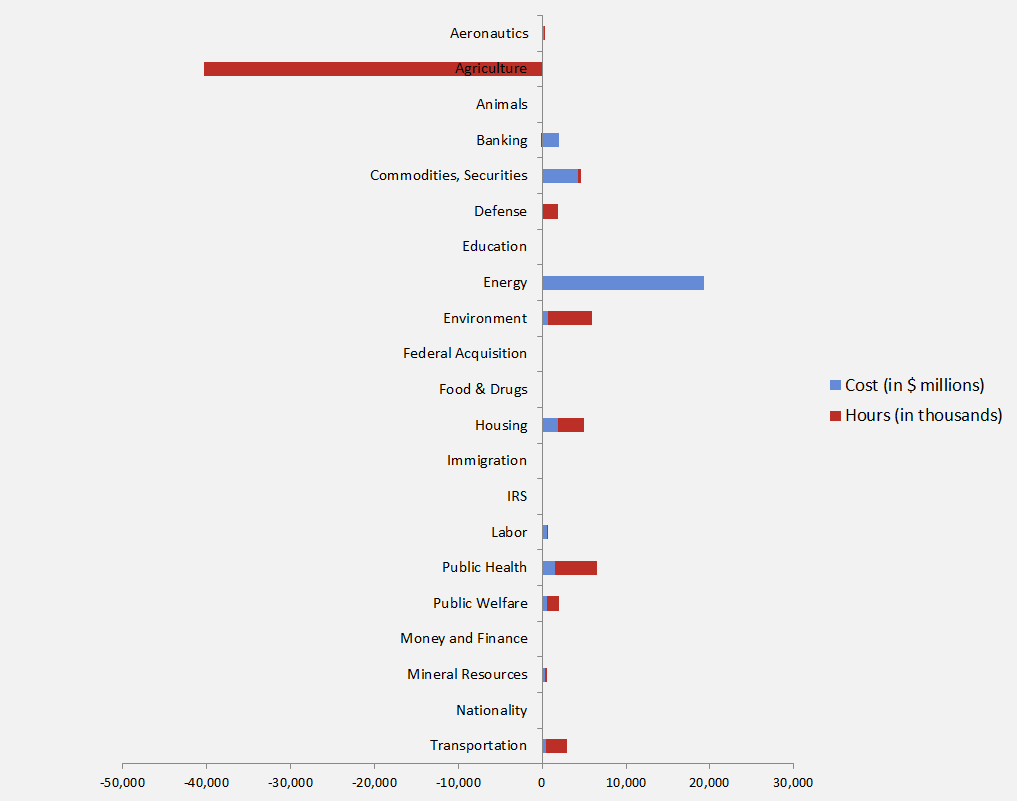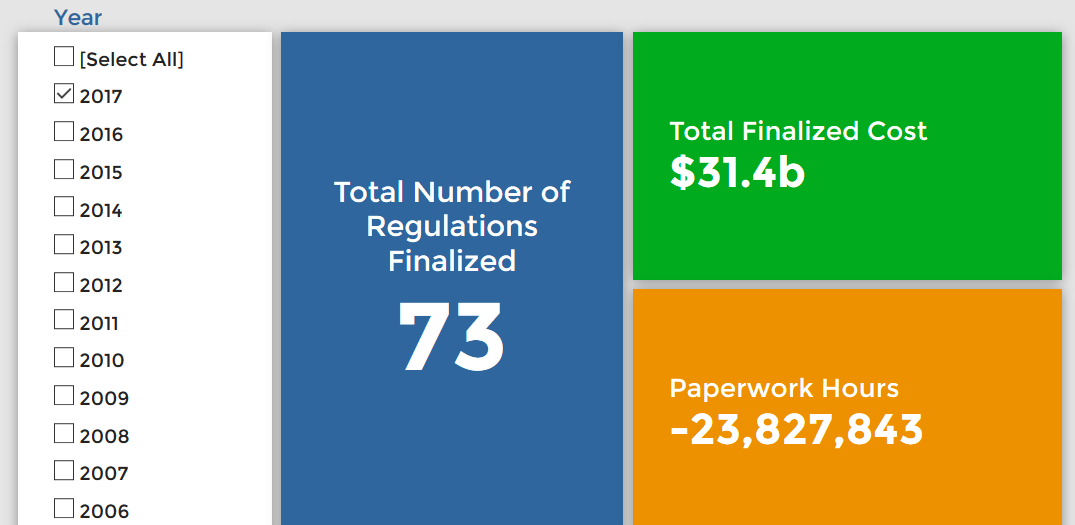Week in Regulation
April 17, 2017
2 Fewer Rules and Few New Rules
President Trump signed two more Congressional Review Act (CRA) resolutions of disapproval, bringing the total this year to 13. The administration also released an unofficial version of its “Market Stabilization” rule for the Affordable Care Act (ACA), but otherwise, it was a slow week in federal regulation. FAA published four rulemakings, including one final rule, which projected $14 million in total costs. Benefits were not quantified. The per capita regulatory burden for 2017 is $442.
Regulatory Toplines
- New Proposed Rules: 36
- New Final Rules: 51
- 2017 Total Pages of Regulation: 18,078
- 2017 Final Rules: $31.3 Billion
- 2017 Proposed Rules: $111.6 Billion
The American Action Forum (AAF) has catalogued regulations according to their codification in the Code of Federal Regulations (CFR). The CFR is organized into 50 titles, with each title corresponding to an industry or part of government. This snapshot of final rules (a change from earlier versions) will help to determine which sectors of the economy receive the highest number of regulatory actions.
Tracking Regulatory Modernization
President trump signed CRA resolutions for Title X funding and savings for political subdivisions. The former only monetized trivial costs, just $24,000, and neither quantified paperwork burdens.
For CRA resolutions, the House and Senate have both passed 13 CRA resolutions, with the Senate passing 13 total and the House 15 in all. President Trump has signed 13 and Congress and the administration have eliminated $3.7 billion in total regulatory costs and 4.2 million paperwork burden hours. There are two additional House CRA approvals on which the Senate has not voted, including a notable methane flaring measure ($1.8 billion in costs). To date, there have been more than 30 resolutions of disapproval introduced.
On Thursday, the administration released the unofficial version of its stabilization rule for the ACA. The previous version estimated $700,000 in reduced costs and 9,140 fewer hours. These burdens are trivial and the final version did not monetize costs or possible burden reductions. Although it is a significant rule, it stated, “It has been determined that this final rule does not impose costs that trigger the above requirements of Executive Order 13771 [one-in, two-out regulatory budget].” Thus, although the administration has released two significant final rules, only one applies to the one-in, two-out budget, and it actually reduced costs.
Below are the agencies that have accrued annual savings and are technically compliant with the president’s regulatory budget:
- Defense: $400 million
- Interior: $360 million
- Education: $100 million
- Labor: $78 million
- HHS: $0.02 million
All non-DOL figures are the result of CRA resolutions of disapproval. Given their historic regulatory output, AAF can predict that Defense, Interior, and Education will likely meet the goal of $0 in net regulatory costs by the end of this fiscal year.
Affordable Care Act
Since passage, based on total lifetime costs of the regulations, the Affordable Care Act has imposed costs of $53 billion in final state and private-sector burdens and 176.9 million annual paperwork hours.
Dodd-Frank
Click here to view the total estimated revised costs from Dodd-Frank; since passage, the legislation has produced more than 74.8 million final paperwork burden hours and imposed $38.5 billion in direct compliance costs.
Total Burdens
Since January 1, the federal government has published $143 billion in compliance costs ($31.3 billion in final rules) and has cut 19.8 million paperwork burden hours (due to 23.8 million in reductions from final rules). Click below for the latest Reg Rodeo findings.












